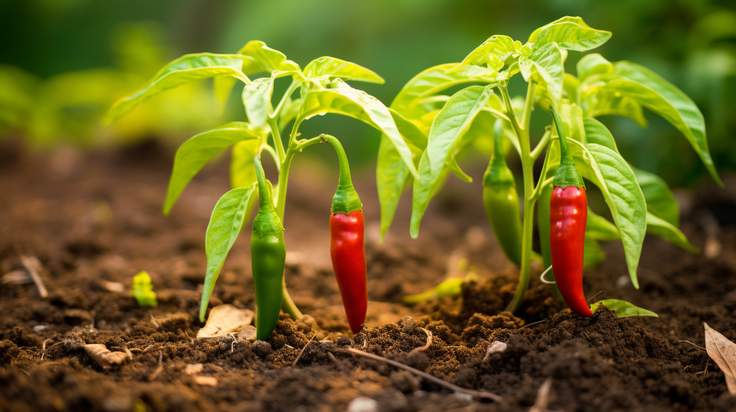Tips to Prevent Cross-Pollination in Your Pepper Garden

Chili peppers come in a dazzling array of shapes, sizes, and heat levels, making them a favorite among home gardeners and spice enthusiasts. Whether you grow them for culinary purposes, to challenge your taste buds, or for their vibrant colors, ensuring pure pepper harvests is essential. Cross-pollination between chili plants can lead to unexpected and sometimes undesirable results. In this article, we’ll explore why cross-pollination happens and provide practical tips to prevent it, so you can enjoy the chili pepper varieties you intended to grow.
Understanding Cross-Pollination
Cross-pollination occurs when pollen from one chili pepper plant is transferred to the stigma (female reproductive organ) of another chili pepper plant. This can happen naturally through wind, insects, or other pollinators. While cross-pollination itself is a natural process, it can lead to unpredictable outcomes, as the resulting peppers may carry the traits of both parent plants.
Why Avoid Cross-Pollination
Preserving Varietal Characteristics: To maintain the unique characteristics, flavor, and heat levels of specific chili pepper varieties, it’s crucial to prevent cross-pollination.
Consistency in Harvests: Cross-pollination can result in peppers with mixed attributes, making it challenging to achieve consistent harvests.
Seed Saving: If you plan to save seeds for future planting, preventing cross-pollination is essential to ensure that the seeds produce peppers true to their parent plant.
Tips for Avoiding Cross-Pollination
1. Isolation Distance
- Plant different chili pepper varieties with a considerable distance between them. This distance varies depending on the species but is typically at least 100 feet (30 meters) to minimize cross-pollination risk.
2. Use Physical Barriers
- Employ physical barriers like row covers or fine mesh netting to keep pollinators, especially bees, away from your chili plants. Make sure to remove the barriers temporarily for controlled pollination.
3. Hand-Pollination
- Consider hand-pollinating your chili plants. To do this, use a small brush or cotton swab to transfer pollen from one plant’s flower to another’s. This method allows you to control the pollination process and maintain purity.
4. Time Separation
- Plant different chili pepper varieties that flower at different times. This can help prevent overlap in flowering periods and reduce the chance of cross-pollination.
5. Know Your Chili Pepper Species
- Be aware that some chili pepper species are more prone to cross-pollination than others. For example, Capsicum annuum varieties are more likely to cross-pollinate with each other, while other species like Capsicum chinense tend to be more self-pollinating.
6. Labeling and Documentation
- Keep accurate records of your chili pepper varieties, their planting locations, and their flowering times. Label your plants clearly to avoid confusion.
Conclusion
Preventing cross-pollination between chili plants is essential for maintaining the integrity of your pepper varieties and ensuring consistent, pure harvests. By following these tips and being mindful of your chili pepper plants’ characteristics and needs, you can enjoy a bountiful and diverse chili pepper harvest that stays true to your intentions. Whether you’re cultivating mild bell peppers or fiery habaneros, keeping your chili plants isolated and well-documented will help you savor the flavors and heat levels you desire. Happy gardening!